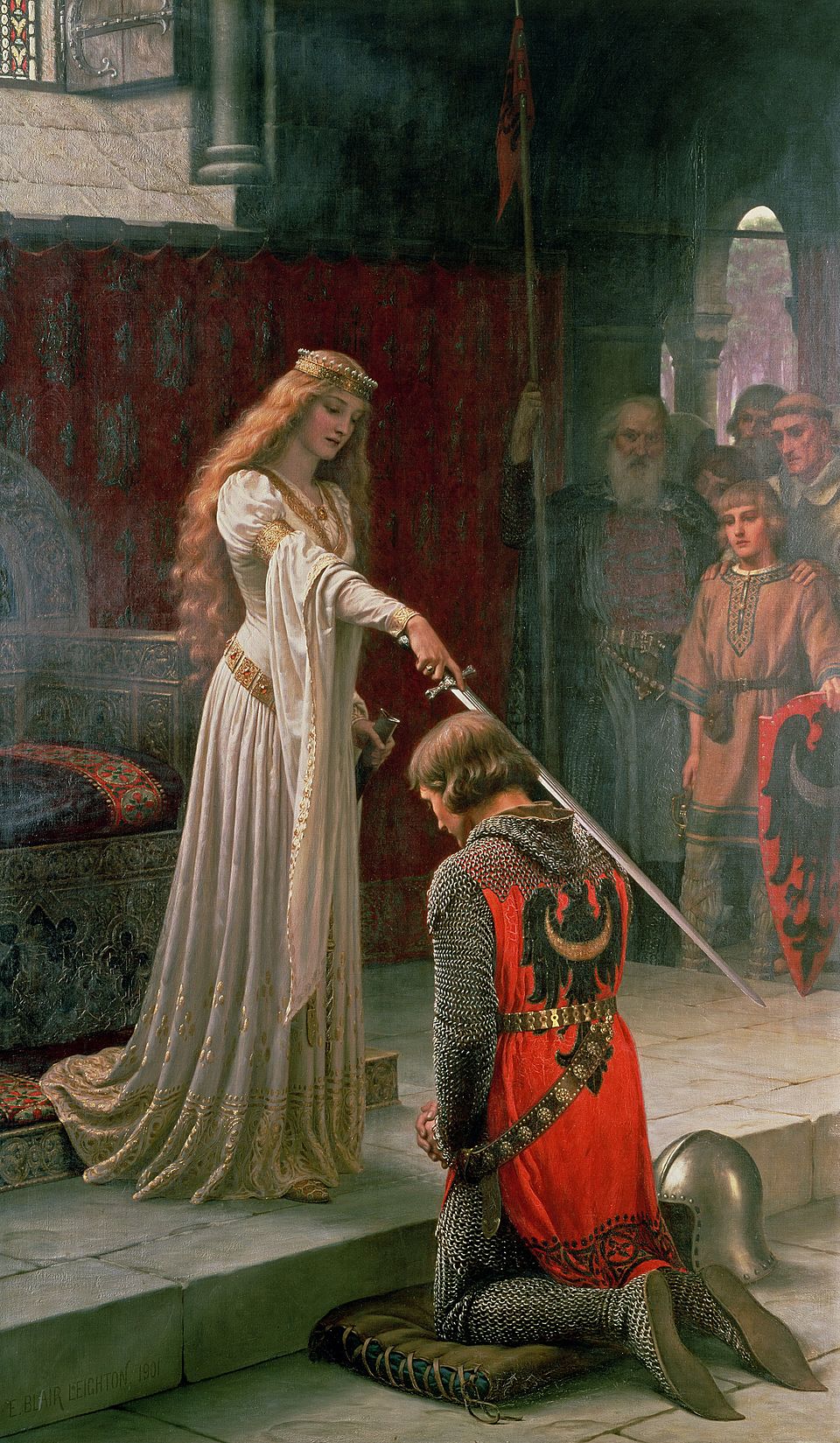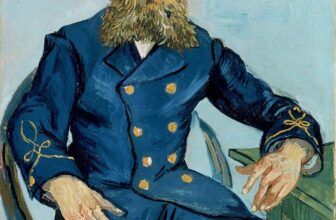
What is the Meaning of The Accolade Painting
Among the world’s most revered and romanticized paintings of the medieval era, The Accolade stands tall in both visual splendor and historical resonance. Rendered in 1901 by Edmund Blair Leighton, this masterpiece is more than a tribute to chivalry; it is an evocative tableau that bridges romantic idealism and artistic precision. To this day, The Accolade continues to captivate audiences with its detailed portrayal of knighthood, virtue, and nobility.
In this story post, we delve deep into The Accolade , exploring its creator, artistic style, symbolic depth, the characters portrayed, and its present-day significance. Whether you are an art aficionado or a casual admirer, this is your ultimate guide to one of the most iconic works of Pre-Raphaelite and Romantic art.
The Artist Behind the Canvas: Edmund Blair Leighton
Edmund Blair Leighton (1852–1922) was a British painter known for his romantic and historical genre scenes. Born in London, Leighton was the son of artist Charles Blair Leighton, who died when Edmund was only a child. Though initially steered toward a commercial career, Leighton ultimately pursued art and trained at the Royal Academy Schools in the 1870s.
Leighton’s work primarily focused on medieval and Regency themes. His compositions were often meticulously researched and executed with a technical precision that captured both the realism of an era and the romanticism of the Victorian imagination. Though he was never an official member of the Pre-Raphaelite Brotherhood, his work shares many of their ideals: a focus on beauty, detail, and the moral symbolism embedded in historicism.
Among his many works , including God Speed (1900), Call to Arms (1888), and Tristan and Isolde (1907) , The Accolade is arguably his magnum opus, combining all of his signature themes: gallantry, ritual, and the allure of the distant past.
Artistic Style: Pre-Raphaelite Influence and Romanticism
The Accolade falls under the broader category of Romantic and historical genre painting, with strong ties to the Pre-Raphaelite style. While the original Pre-Raphaelite Brotherhood had dissolved decades before Leighton began his career, its influence remained potent in Victorian England.
The Pre-Raphaelites were known for their detailed realism, vivid colors, and idealized depictions of medieval and literary subjects. In The Accolade, Leighton exhibits all these characteristics: the shimmering fabric of the lady’s gown, the stoic composure of the knight, the meticulous architecture, and the overall sense of reverence and ceremony.
Technically, The Accolade is an oil painting on canvas, a medium that allows for the depth of color and richness in texture seen throughout the composition. Leighton’s work is finely layered, with a level of photographic detail that invites the viewer to step directly into the medieval world he envisioned.
What Is The Accolade Painting About?
At first glance, The Accolade appears to be a simple ceremonial scene: a knight kneels before a noblewoman, who is bestowing upon him the honor of knighthood. Yet beneath this surface lies a wealth of cultural, historical, and symbolic meaning.
The scene captures the moment of investiture , the bestowal of knighthood by the symbolic touch of a sword on the recipient’s shoulders. This ritual, known as “dubbing,” was a formal part of medieval chivalric tradition. It represented not just the conferring of military responsibility, but also the ethical and moral ideals of knighthood: loyalty, bravery, humility, and honor.
By choosing a female figure as the one performing the accolade , perhaps a queen, a princess, or a noblewoman , Leighton adds a layer of romantic chivalry. The lady becomes not just a figure of authority, but a muse, a symbol of grace and purity, for whom the knight may devote his life and service.
This interplay between romantic idealism and historical realism makes The Accolade a compelling work. It is not merely a recreation of a medieval event, but a Victorian interpretation of chivalry’s emotional and aesthetic values.
What Is Happening in The Accolade?
The painting shows a single, focused moment: a young knight, kneeling with head bowed, receives the tap of a sword on his shoulder from a noblewoman clad in white. She stands tall, calm, and regal , a picture of grace and solemnity. Her flowing gown and golden hair suggest purity and divinity, while the sword she wields lends her an air of authority.
The setting appears to be a stone chamber or a great hall of a castle. Behind the knight stands a row of silent observers, dressed in courtly attire, bearing witness to this sacred rite. A red carpet lies beneath the knight, and a sword and shield rest on the floor , symbols of his future duties.
The knight himself is clad in a chainmail hauberk, hands folded in reverence, with a golden cloak draped over his armor. He is youthful, perhaps in his early twenties, embodying both physical strength and moral submission.
This is a moment of transformation. The knight is not only being honored but entrusted with a code of conduct that will define his identity. In a sense, this is his moral and spiritual baptism into the realm of knightly virtue.
Who Is the Knight in The Accolade?
Leighton did not assign specific historical identities to the characters in The Accolade, and thus the knight remains unnamed. This anonymity is intentional , the figures are archetypal rather than individual. The knight represents every man who aspires to the ideals of chivalry; he is an everyman hero stepping into a sacred duty.
That said, many have speculated about the identity of the knight. Some suggest he could be inspired by legendary figures such as Sir Lancelot or Sir Galahad, both of whom embody the highest ideals of Arthurian knighthood. Others believe he may represent a Crusader, about to embark on a holy quest.
The lack of a specific identity allows viewers to project their own ideals and stories onto the painting. He could be any man on the cusp of greatness, honored not only for his valor but for his purity of heart.
The Value of The Accolade: Artistic and Monetary Worth
The Accolade has long been celebrated as one of the most beloved romantic paintings of the 20th century. Its popularity has made it a favorite subject for prints, posters, and book covers. It often appears in educational texts on medieval history, knighthood, and art history, attesting to its cultural impact.
As an original, the painting’s monetary value is difficult to pinpoint because it is not actively on the auction market. Original works by Edmund Blair Leighton have sold for hundreds of thousands of dollars, and some speculate that The Accolade, being his most iconic piece, could be worth several million dollars today.
However, its true value lies beyond money , it represents a collective longing for honor, virtue, and romance in an age of industrial progress and social upheaval. It continues to inspire idealism in viewers more than a century after its creation.
Where Is The Accolade Today?
Today, The Accolade resides in a private collection, owned by the Spanish collector Juan Antonio Pérez Simón. He is known for owning one of the largest private art collections in the world, featuring works from the 14th to the 20th century, with a strong focus on Pre-Raphaelite and Romantic painters.
Due to its location in a private collection, the painting is not on permanent public display. However, it has been part of several major exhibitions around the world. Notably, it was featured in Victorian Obsession: The Pérez Simón Collection at Leighton House Museum in London and later traveled to various international venues.
Though it is not currently available for public viewing, its image lives on through reproductions, museum-quality prints, and digital archives, making it one of the most recognizable artworks of the modern era.
The Enduring Appeal of The Accolade
What makes The Accolade so enduring is its ability to speak to multiple layers of human experience , courage, devotion, beauty, and the pursuit of ideals. In an age when much of modern art seeks to deconstruct or question tradition, The Accolade unapologetically embraces it.
It reminds us of a world in which honor was sacred, actions had moral weight, and beauty was inseparable from truth. It tells the story of transformation , not just from boy to knight, but from individual to symbol. And perhaps most of all, it shows us that the human longing for purpose, recognition, and virtue is timeless.
In this painting, Edmund Blair Leighton gives us more than a moment in history; he gives us a mirror in which we might glimpse our better selves.
In the end, The Accolade is not simply a painting; it is a visual poem about valor and virtue. Through its masterful composition, historical symbolism, and romantic tone, it transcends its canvas to become a cultural icon. Whether viewed in a museum, studied in an academic text, or admired in a home, it continues to stir the imagination.
And perhaps that is its greatest accolade of all.




